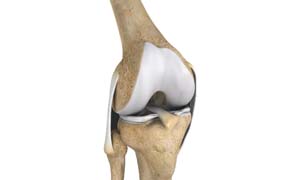
What is Multiligament Instability?
The knee is a complex joint of the body that is vital for movement. The four major ligaments of the knee are anterior cruciate ligament (ACL), posterior cruciate ligament (PCL), medial collateral ligament (MCL) and lateral collateral ligament (LCL). They play an important role in maintaining the stability of the knee. A multiligament injury is a tear in one or more ligaments of the knee, which affects the knee stability.
Causes of Multiligament Instability
Multiligament instability occurs because of a direct blow to the knee, fall from a height or motor vehicle trauma. Multiple ligament knee injuries are common in athletes involved in contact sports such as soccer, football, and basketball.
Symptoms of Multiligament Instability
The symptoms of multiligament knee injuries may include pain, swelling, limited range of motion, injuries to nerves and arteries of the leg, and knee instability.
Evaluation of Multiligament Instability
Sometimes, knee pain due to other injuries results in involuntary movements that give the sensation of instability. A thorough examination by an experienced doctor is very crucial for the correct diagnosis of multiligament instability.
Treatment of Multiligament Instability
Usually, grade I (mild tear) and grade II (partial tear) multiligament injuries are treated conservatively with rest, ice, compression, and elevation. The treatment of grade III (complete tear) multiligament injuries requires surgery. Moreover, unlike grade III single ligament injury, the surgery is usually performed soon after the injury and often involves more than one surgery.
Surgical reconstruction is usually performed arthroscopically. The surgery involves reconstruction of the torn ligament using a tissue graft taken from another part of the body, or from a donor. The damaged ligament is replaced by the graft and fixed to the femur and tibia using metallic screws. Gradually, over a period of a few months, the graft heals.
After the multiligament knee reconstruction surgery, crutches may be required for 6 to 8 weeks. Most patients can also return to their high-level sport after a period of rehabilitation.
Related Topics:
- Knee Pain
- Knee Sprain
- ACL Tears
- Meniscal Tears
- Patellar Instability
- Chondromalacia Patella
- Jumper's Knee
- Kneecap Bursitis
- Baker's Cyst
- Iliotibial Band Syndrome
- Lateral Patellar Compression Syndrome
- Fractures of the Tibia
- Osteochondritis Dissecans of the Knee
- Pediatric ACL Tears
- Shin Splints
- Knee Injury
- Unstable Knee
- Goosefoot Bursitis of the Knee
- MCL Tears
- MCL Sprains
- Meniscal Injuries
- Fractures of the Patella
- Ligament Injuries
- Multiligament Knee Injuries
- Multiligament Instability
- Knee Arthritis
- PCL Injuries
- Chondral or Articular Cartilage Defects
- Patellofemoral Instability
- Patella Fracture
- Recurrent Patella Dislocation
- Quadriceps Tendon Rupture
- Patellar Tendon Rupture
- Lateral Meniscus Syndrome
- Tibial Eminence Spine Avulsion Fracture
- Posterolateral Instability
- Osteonecrosis of the Knee
- Knee Angular Deformities
- Osteochondral Defect of the Knee
- Medial Gastrocnemius Strain
- Articular Cartilage Injury
- Loose Bodies in the Knee
- Knee Fracture
- Knee Osteoarthritis
- Knee Sports Injuries
- Patellar Tendinitis
- Pediatric Tibial Tubercle Fractures
- Women and ACL Injuries
- Medial Meniscus Syndrome
- Adolescent Knee Problems
- Anterior Knee Pain
- Runner's Knee
- Osgood-Schlatter Disease
- Patellar Dislocation/Patellofemoral Dislocation

